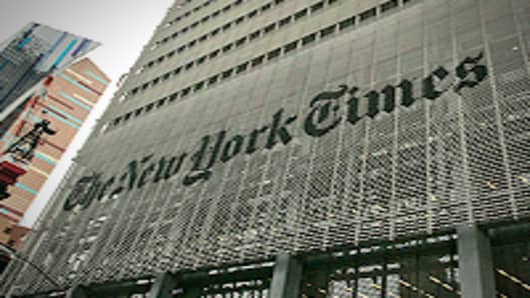After nearly two years in the works the New York Times is finally starting to roll out its long-awaited pay wall.
The three subscription options are designed to create a new revenue stream while protecting the websites traffic and ad revenue. The new pay model gives NYTimes.com readers 20 free articles every four weeks before asking them to pick a subscription plan.
There are three subscription options — each available for a four-week commitment. Fifteen bucks buys access to the NYTimes.com online and on smartphones. Twenty dollars per four weeks includes the website plus access on tablets, like iPads. The premium option is "All Digital Access" — $35 per four weeks, which includes apps for tablets, mobile devices, and online. That 'All Digital Access' pass is automatically included in all home delivery subscriptions. Subscriptions to the newspaper through eReaders like the Kindle are not included in any of the three options — they're sold separately.
The idea is to charge die-hard NYTimes readers who make the service their home page, and not to charge casual readers who come to the site occasionally, usually directed by links on Facebook, Twitter or from a Google search. Here's the key thing — if you are directed to a New York Times article from a link on social media or Google you will *not* trigger the pay wall.



